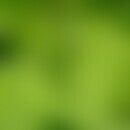Synonym(s)
Alkana bush; Egyptian dyer's bush; Egyptian Privet; Henna Bush; Lawsonia inermis; Lawsonia spinosa L.
DefinitionThis section has been translated automatically.
2-5 m high deciduous shrub; whitish bark; whitish to pink flowers, pea-sized, spherical capsule fruits, which turn blue to purple-black when ripe.
The henna obtained from the powdered leaves is used for dyeing hair, utensils, as a food dye and fragrance.
Phytotherapeutically, the leaves, Hennae folium, are used in empirical medicine, no monograph.
OccurrenceThis section has been translated automatically.
Mediterranean countries, Asia Minor, North and East Africa, Northern Australia, India, Madagascar.
You might also be interested in
Field of application/useThis section has been translated automatically.
Note(s)This section has been translated automatically.
Even the ancient Egyptians used henna as body jewelry, for skin, nails and hair. In India, palm painting is still very popular. Henna is currently experiencing an upswing as a colorant for non-permanent tattoos.
Sensitizations caused by pure henna are rare (see henna below). The allergen is a 2-hydroxy-1,4-naphthoquinone. Sensitizations caused by the p-phenyldiamine added to henna are more common.




